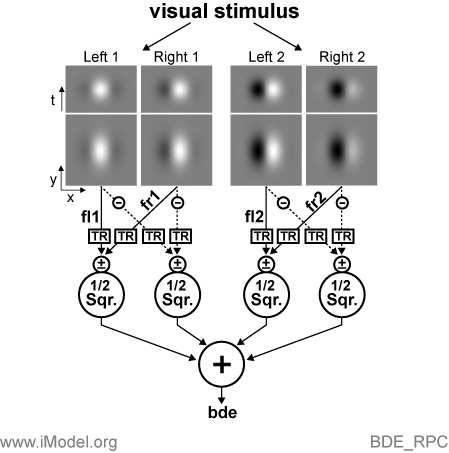BDE_Gabor
BDE_Gabor_DS
BDE_CWQ
ME_Gabor
MEO_Gabor
Parameter Text Files
Binocular Disparity Energy after Read, Parker and Cumming
Summary
This binocular disparity energy (BDE) model has linear spatial filters as in the
BDE_Gabor model, but with the modification that the
monocular outputs of each initial stage filter are rectified before being binocularly
combined as described by Read et al (2002). There are 4 variants based on those some of
thise shown in their Figure 8: tuned excitatory (TE),
tuned inhibitory (TI), near (NE), and far (FA) models.
Results
Data Browser
- Read JCA, Parker AJ, Cumming BG (2002) A simple model accounts for the response of disparity-tuned V1 neurons to anticorrelated images. Vis Neurosci 19:735-753.
- Ohzawa I, DeAngelis GA, Freeman RD (1990) Stereoscopic Depth Discrimination in the Visual Cortex: Neurons Ideally Suited as Disparity Detectors. Science 239:1047-1051.

The raw signal (bde) is then offset, scaled and half-wave rectified (although the signal is typically already non-zero unless the scaling or offset has introduced negative values), and it is used to drive a Poisson spiking mechanism. The spikes are time shifted to simulate a neurobiological latency. See the model (.moo) files for the parameters that govern these computations.